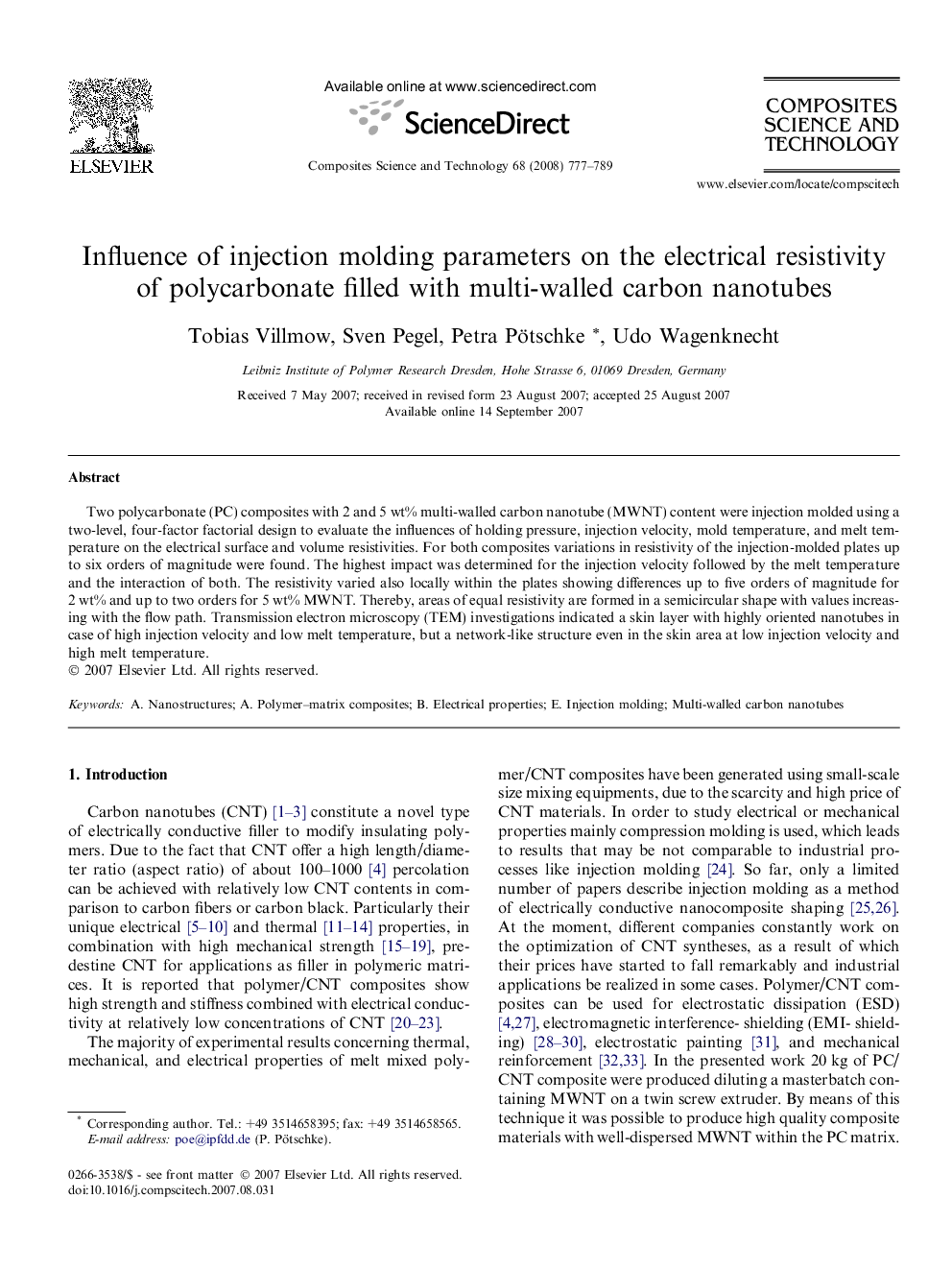| Article ID | Journal | Published Year | Pages | File Type |
|---|---|---|---|---|
| 822359 | Composites Science and Technology | 2008 | 13 Pages |
Two polycarbonate (PC) composites with 2 and 5 wt% multi-walled carbon nanotube (MWNT) content were injection molded using a two-level, four-factor factorial design to evaluate the influences of holding pressure, injection velocity, mold temperature, and melt temperature on the electrical surface and volume resistivities. For both composites variations in resistivity of the injection-molded plates up to six orders of magnitude were found. The highest impact was determined for the injection velocity followed by the melt temperature and the interaction of both. The resistivity varied also locally within the plates showing differences up to five orders of magnitude for 2 wt% and up to two orders for 5 wt% MWNT. Thereby, areas of equal resistivity are formed in a semicircular shape with values increasing with the flow path. Transmission electron microscopy (TEM) investigations indicated a skin layer with highly oriented nanotubes in case of high injection velocity and low melt temperature, but a network-like structure even in the skin area at low injection velocity and high melt temperature.
